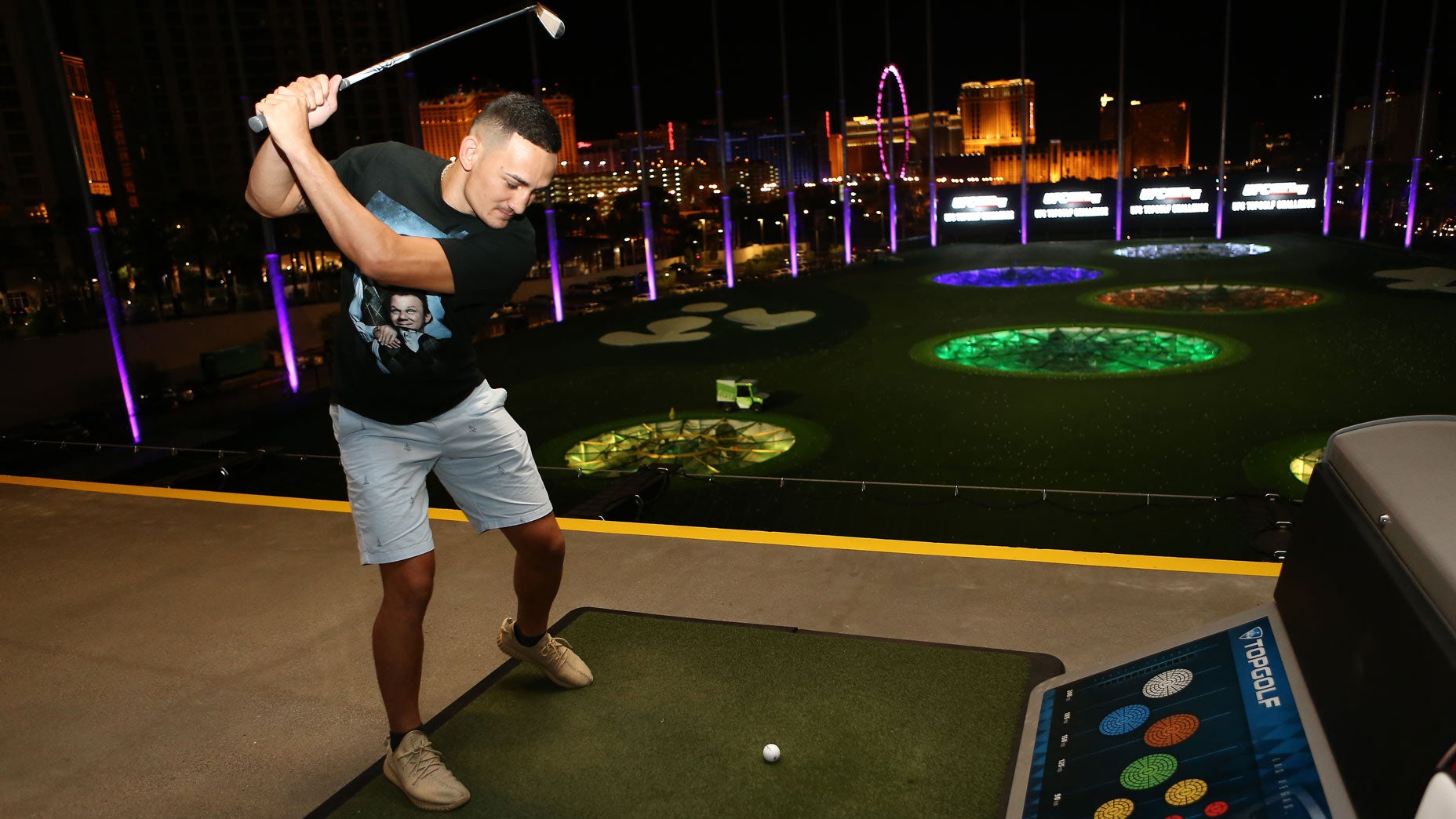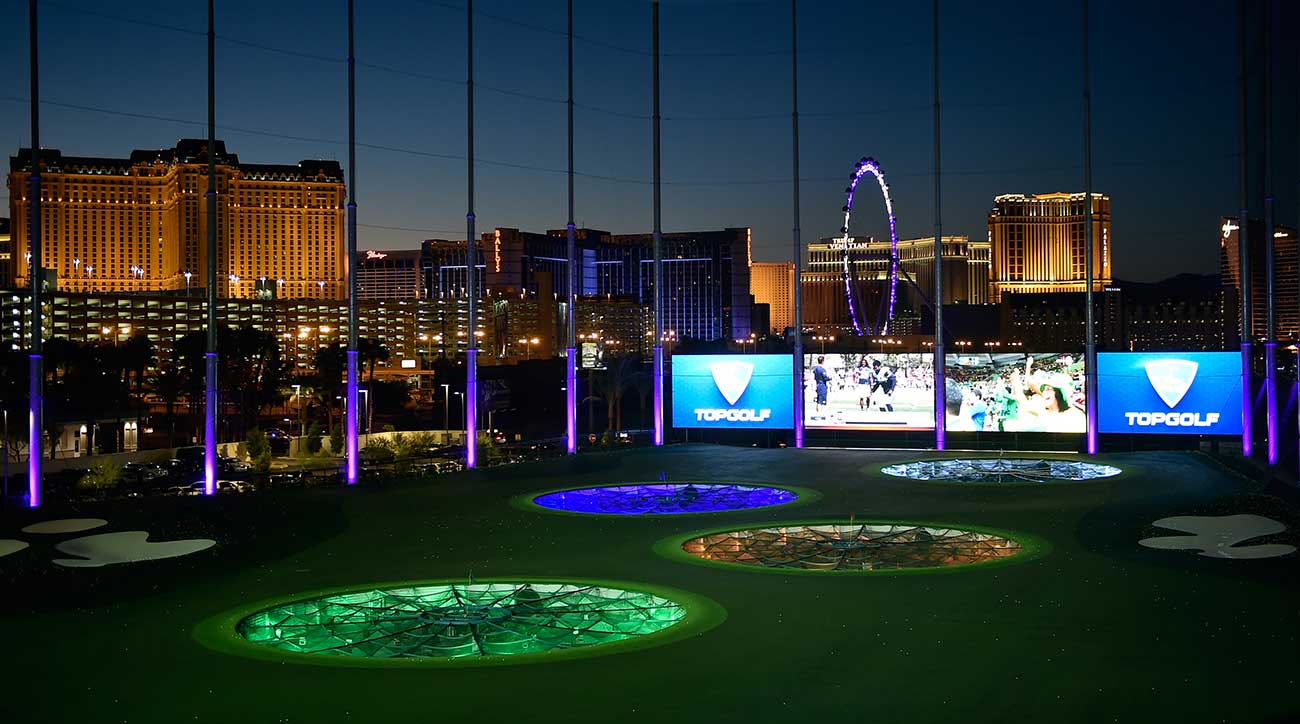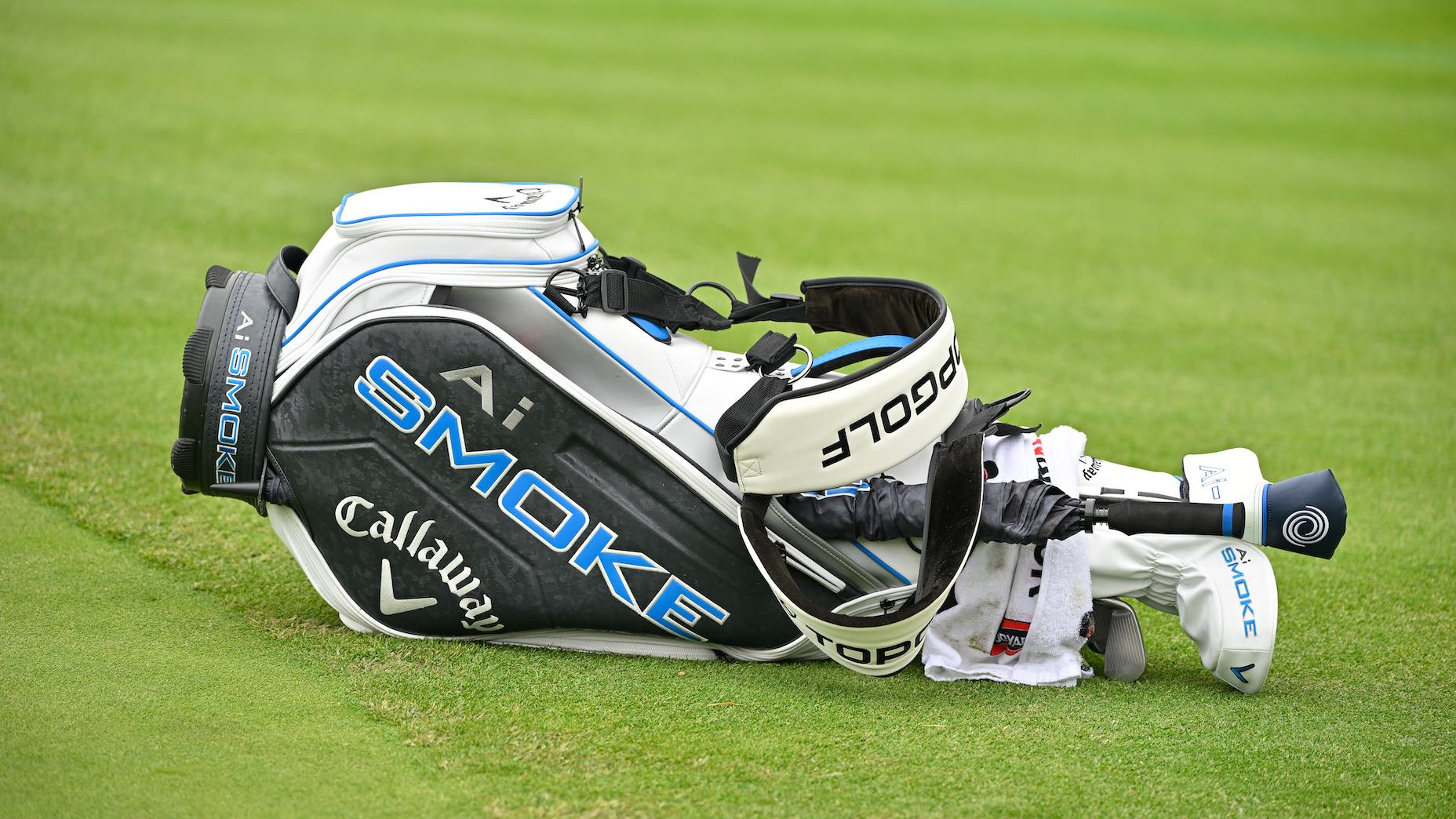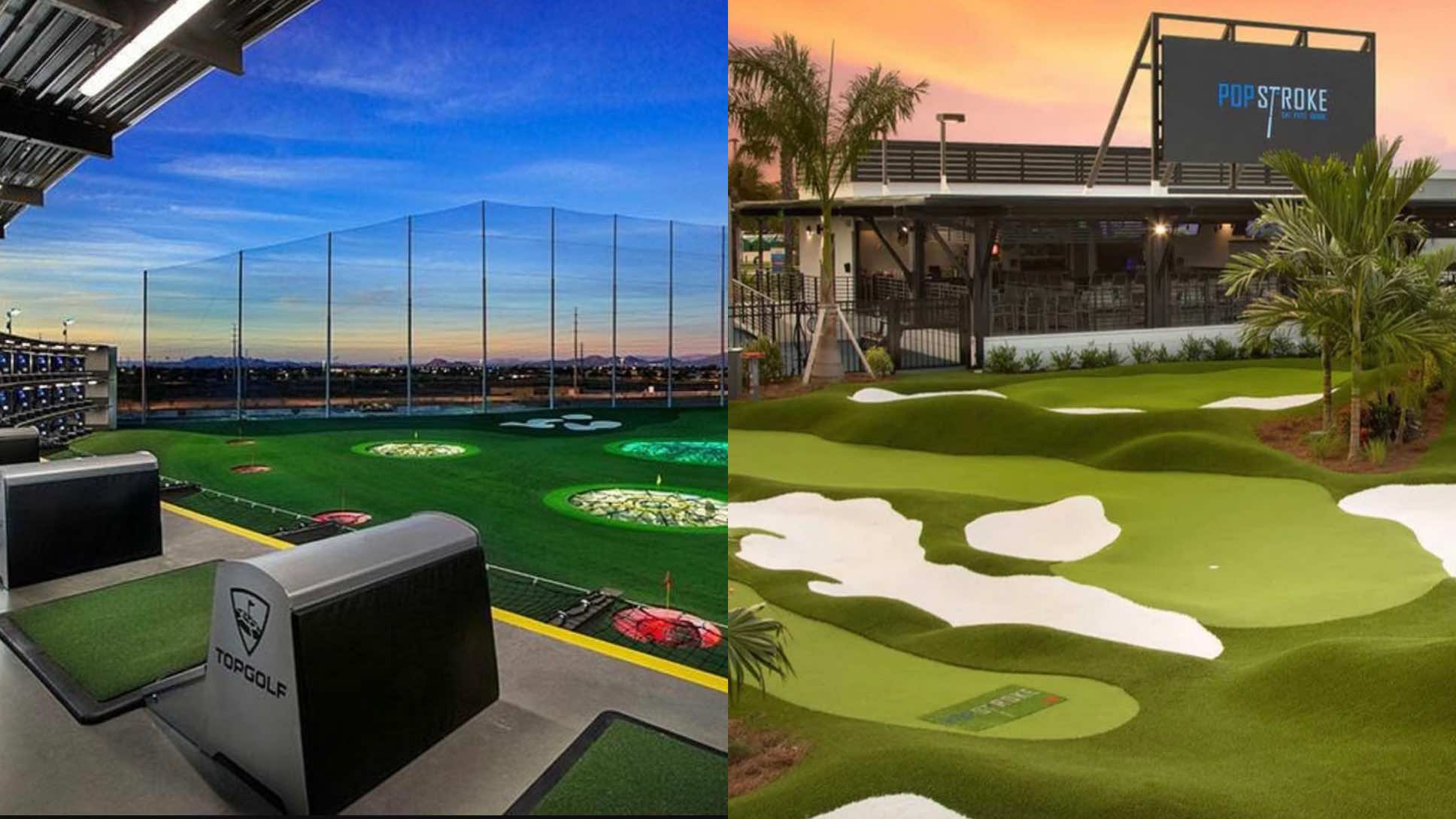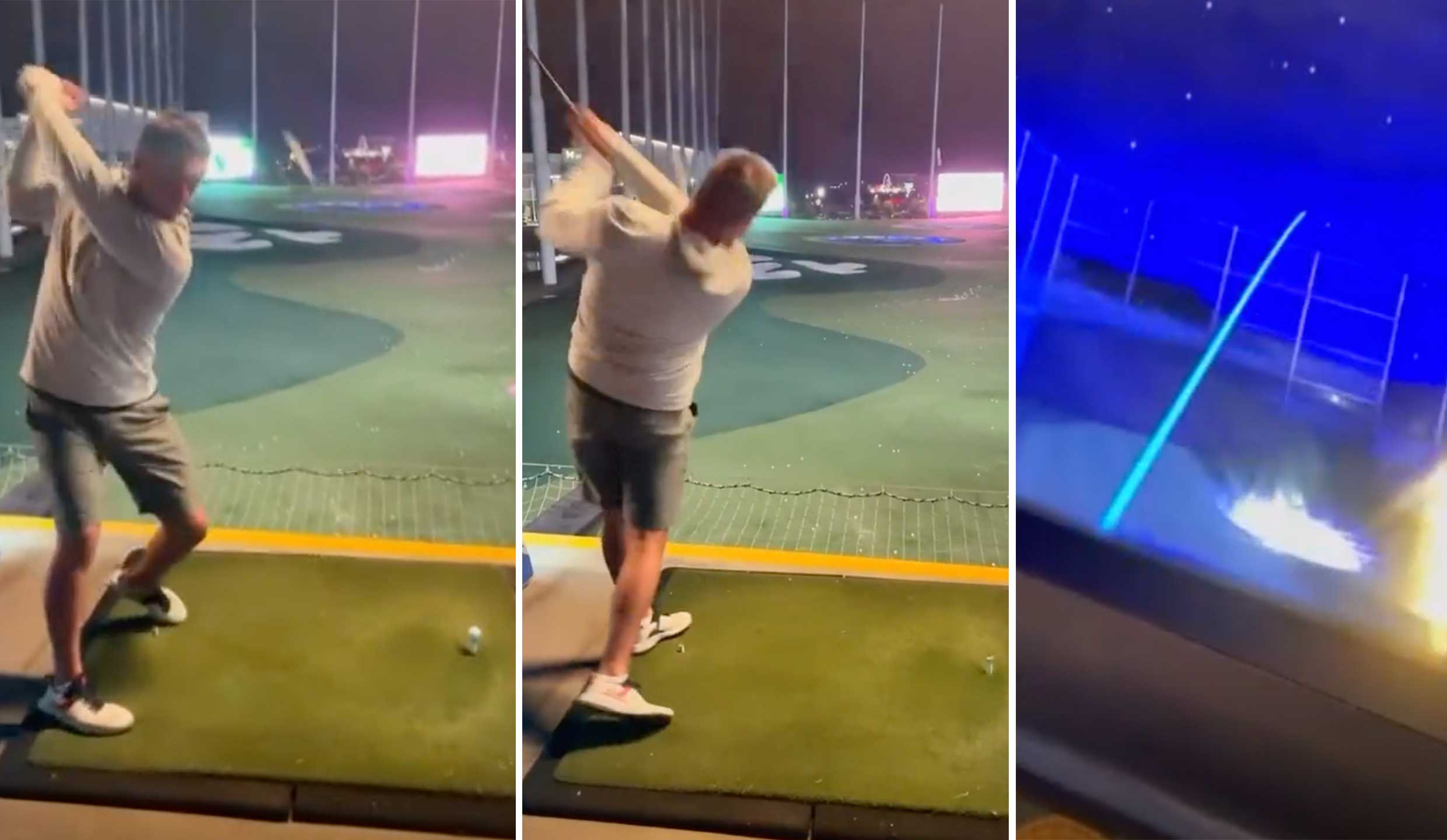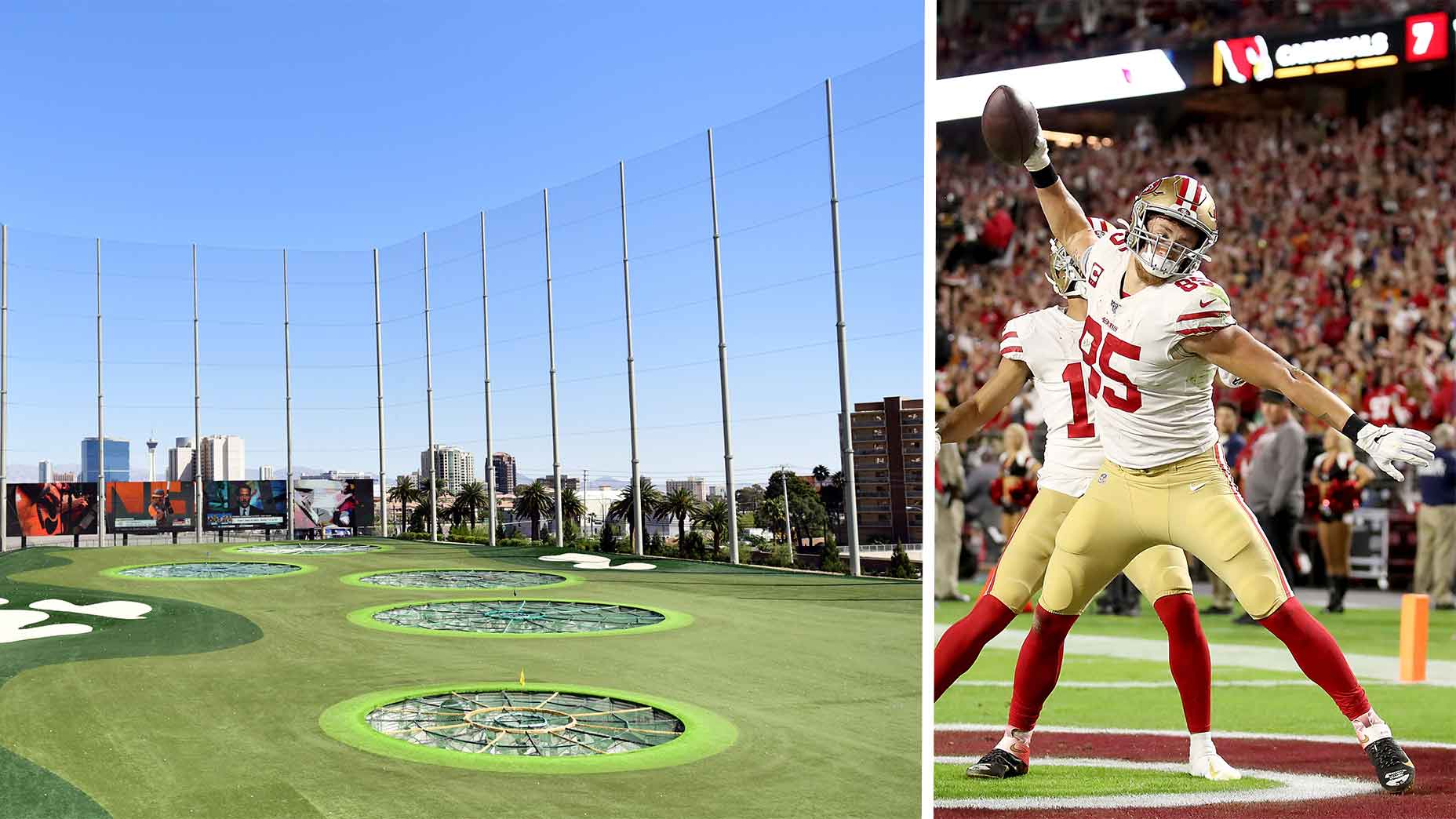On Tuesday, Callaway and Topgolf announced that they would be merging, with Callaway agreeing to buy the remaining stake in the driving range entertainment business in an all-stock deal.
Callaway, which first invested in Topgolf in 2006, already owned 14% of the company. The terms of the merger imply Topgolf’s equity value at approximately $2 billion.
So why did Callaway make the investment — and what does it mean for the future of both companies? Callaway CEO Chip Brewer and Topgolf CEO Dolf Berle sat down with GOLF.com on Wednesday to lay out a more complete vision.
The following interview has been edited lightly for clarity:
Dylan Dethier, GOLF.com: My first question is simple but elemental. What did Callaway see in this deal? What is Topgolf doing right that you guys wanted in on?
Chip Brewer, Callaway CEO: In short, Dylan, Topgolf is the best thing that happened to golf since Tiger Woods. It’s transforming the game. And it’s going to be the biggest source of growth for our industry.
It’s accessible fun. It fits with the times. It’s also a great business concept. And we’ve also been an investor since 2006; I’ve been on the board since 2012, so I’ve had a ringside seat as this business has grown and developed.
Topgolf opens first-of-its-kind facility down the road from Augusta NationalBy: James Colgan
When you look at the two businesses, they just really fit well together. Callaway is an iconic brand. We’ve been around now for a long, long time and we’re global leader in the golf equipment market. We have a strong relationship with consumers globally. And Topgolf is creating new golfers, but they’re also entertaining existing golfers — half the visitors that go to Topgolf venues are already golfers themselves. So the access and the reach and the added growth and value that we think we can great through that consumer overlap and the consumer growth.
And then of course there are Topgolf’s other associated businesses, like Toptracer Range, which is incorporated at driving ranges. And obviously avid golfers go to ranges, so that’s not a big leap. They have the ability to make the range more fun, more exciting and more engaging for golfers of all abilities.
With our distribution network on a global basis, we can help them do that faster and better. And then what? We can reach consumers. We can add value to both brands and make things more exciting for the consumer in the process. So really we’re doubling down our bet on golf at a time when golf is clearly in a strong position and surging, where we see a big increase in the total addressable market of the business.
Dethier: You mention this interesting split, nearly 50-50 I think, of people who go to Topgolf and identify as golfers versus non-golfers. So my question is this: Is Topgolf golf? And does it matter whether it is or not?
Brewer: That’s a great question; I’ll answer it and then let [Topgolf CEO] Dolf talk. Topgolf is not traditional golf, but it is golf.
There are different types of golf as the game is moving forward, which is awesome. And we should celebrate that. That’s the best thing that’s ever happened to golf, right? It isn’t all tournament golf. It isn’t all country club golf or even private vs. public golf, right? Golf doesn’t have to be a four-hour round on a golf course or a five-hour round or, if you’re playing in college, a six-hour marathon.
And so Dolf and his team at Topgolf are bringing in a whole new aspect to golf. But the metrics show that 75% of the people that are non-golfers and visit Topgolf have a strong desire to then go play traditional golf. Another survey that was just done at the venue showed that half of these non-golfers intend to play golf on a golf course in 2021. So you’re clearly creating new golfers.
Dolf Berle, Topgolf CEO: I think it’s an important question, whether Topgolf is golf. But “golf” itself is much broader than it used to be. Here’s what we know: 49 percent of the people who come to Topgolf venues are, in fact, “golfers,” meaning they play more than one time a year, and there’s a lot for them to enjoy there. But most importantly, they can bring friends who are non-golfers and introduce them to the game in a very accessible way. Those are the 51 percent of the people who come to Topgolf venues as non-golfers and play one or fewer times per year.
And so we just make it easy to start in a fun environment, in a social environment. And you need look no further than the people who play in high heels or work boots or hightops or any number of things that would suggest people are not invested yet in golf gear to understand that for many it’s a first-time experience.
We’ve just really emphasized the fun and the social aspects of it in a way that thankfully introduces many people to more traditional golf, which then becomes a lifetime passion.
Dethier: How tangibly will consumers experience change over the coming year — and, say five years — due to this merger? How will things feel different on site?
Berle: What I get excited about is what the Callaway business and the infrastructure they can provide to help accelerate the progress we’re making globally. They have a remarkable set of relationships and teams on the ground and partners internationally. And that’s a part of our business that’s really just getting going, our international Topgolf venues and also our Toptracer Ranges, which are now in 29 countries. And the excellence that comes with the Callaway name makes for a good partnership with us, an upstart in the golf world, and show that we’re dedicated to being as good as we can be for our business, yes, but mostly for our guests. I’ve always been grateful for Chip’s presence on our board, which helped legitimize our commitment to the best standards in golf.
I could go on for a long time about this, but here’s the point: I think if you’re a child in a foreign country that might, by virtue of your birth, never have felt that golf could be part of your identity or who you are, I think that our companies together could make that more of a reality and more of a possibility for you. And I think that’s a really, really positive thing.
Brewer: You know, my view is that it’s not going to change the consumer experience, really. Topgolf is really good at the consumer experience and we’re not going to mess that up. We’re not changing your names, we’re not changing your teams. But we’re going to help them accelerate, to get even better at their own mission and values.
But the basic consumer experience that one gets by visiting Topgolf or Toptracer Range is really one of the things that we’re so excited about. Consumers love it. It’s not an unproven model. There’s just not a lot of risk with it. The venues work really well, and one of my important jobs as CEO is not to screw that up. Let them keep doing what they’re doing really well and I’m here to add to that; that’s my commitment to the Topgolf team.
Dethier: Should we expect to see Callaway clubs and golf balls in Topgolf facilities?
Brewer: Over time, I think we’ll use that opportunity to promote and expose. We’ll look at different things we can do. We have a fitting center at the Vegas facility. So we’re going to look at that and experiment with a bunch of ideas. It makes sense, right? It would be pretty cool if you go in there and get a high-tech Callaway-endorsed fitting center associated with Topgolf. And there will be other avenues that we’ll look at to enhance the Callaway market share and get exposure.
FIRST LOOK: Callaway Apex MB, X Forged CB and X Forged UT ironsBy: Andrew Tursky
Dethier: Will every set and bay be stocked with Callaway? Will the balls coming out be Callaway golf balls and all somewhat standardized?
Brewer: You can’t really do that in your driving range, because — and we love this aspect — they’re not always you or me in terms of golf experience. So you really have to beef that equipment up for the golfer who might be swinging it. We help them design some of that product right now and it has to be industrial-grade or it won’t survive.
Dethier: That’s funny, it hadn’t quite occurred to me the beating those clubs must take, but yeah, that makes sense.
Berle: I should say that in every Topgolf venue, there is the ability to upgrade to premium clubs. And all of our premium clubs are already Callaway.
Dethier: Let’s talk footprint. Looking at your sites so far, clearly you’ve picked and chosen very intentionally. But you’ve continued to expand, and a co-worker insisted I ask if we should expect to see a Topgolf in every town in America. And I wonder, is that part of the vision to get Topgolf ubiquitous? What’s the vision?
Berle: So, the remarkable thing is that by virtue of what we do with our venues and with Toptracer, we really can be fairly ubiquitous.
And let me describe that a little bit more. The Toptracer Range dimension is something we can put in every driving range across America. That’s a licensed product, and therefore our clients are the driving range owners — and we can talk more about what we can do there in terms of pushing content onto the screens and making that more and more exciting.
But to answer your question specifically, what we’ve been doing over these last few years is to expand the types of Topgolf venues that would ensure good returns in different-sized cities. So, to say what might be obvious, you can put a bigger facility in larger towns, in Atlanta and Dallas and Houston and Chicago, etc., have one or more of the 102-bay venues. We have a medium-sized venue type, as we call it, which is 72 bays; examples would be places like Baton Rouge and Tucson and cities that are more medium-sized.
Topgolf, coming to a city near you? Company testing small-footprint conceptBy: James Colgan
And most recently we’ve developed a smaller, more flexible single-level venue which can go to considerably smaller towns. And we have two of those built, one in Augusta, Georgia, which you’ve probably heard of. And the other is in Chattanooga, Tennessee. And those are doing quite nicely.
So we believe that there is room for more; we’ve looked around the country to determine what the optimal placement would be. And we believe there is with those three sizes combined that there’s room for 200 Topgolf venues in the United States.
And then by extension, through our franchising, we can go ahead and expand those various size formats across the world which gets you to a number of closer to 450 globally.
And that is where we’re looking today. But maybe the last thing I’ll say is that the team is one that continues to innovate. When I joined the company, for example, we were just getting started on the 72-bay venues and we actually hadn’t even thought through what the smaller venues would look like. And so, knowing this team, I would say there’s more to come.
Dethier: So when you point to that 200 number, you’re talking about Topgolf venues. What about when you’re talking Toptracer Range? As an example, I live in Seattle now. I’m a few minutes from Interbay Golf Center, which is an awesome place, and they have Toptracer Range available for upgrade when you get a bucket of balls. They have leagues available in the winter. If 200 is the number you have in mind for Topgolf, what about for Toptracer Range?
Berle: We don’t have a specific number that we’re quoting related to that. But let’s just say that we’re in the low single digits today in terms of penetration in that market, at most. And so there’s just a lot of years of growth and excitement in that space.
Chip, I don’t know if you want to embellish, but we’re continuing to evolve in terms of how we work with various driving ranges and so on. We’re not focused on a specific number, but it’s obviously something that can be ubiquitous and it’s an exciting opportunity.
Brewer: There’s a huge advantage of scale that we’d be able to provide there, because as you put it into these facilities, like the driving range you’re referring to, we can have interconnectivity between various locations and we can run contests and tournaments and the scale of the different games we could put in. A player like you can go to that driving range and track your shots and run through a combine if you’re working on your game, looking at it from a better player’s perspective.
But next to you could be a new golfer, a 12-year-old, playing Angry Birds or Go Fish or any Topgolf game. And then you could be competing against friends or people you don’t even know in a virtual tournament, which they’ve already tried out.
Berle: One of the great things about the Toptracer Range technology is that it’s networked, and every shot that is captured on a Toptracer camera anywhere in the world comes back into a central database. And what that allows us to do is to have tournaments that are truly global in scale. And as Chip references, it could be a small tournament, possibly within the same state or between two clubs, or it could be worldwide.
We wanted to prove this to ourselves and to the world, and so last December we did a global tournament, which was a nine-shot challenge, and we had 19 countries and 7,000 golfers participate. And what was fun about it was that we were able to have leaderboards because we did it over just a few days to build excitement, although we could have done it all simultaneously. We built in a social media opportunity for people to trash-talk and we saw the differences in the way, y’know, people from different cultures have different approaches to that part of it, too.
And so this is one of the ways that we’re trying to connect people in meaningful ways, which is what we describe as our purpose. There’s a lot more we can do in the future. And when we do things like that, it allows us also to tie in sponsors who are looking for a global audience and to monetize things like that in a number of ways. So the business proposition is quite interesting in addition to what we can do from the fan experience.
Brewer: And one more thing on that note: If we get all that data, If I have that data as a club manufacturer; if you’re hitting your shots and I notice you’re hitting a bunch of snap-hooks, say, that’s really interesting data for me to be able to target-market, isn’t it? And so you can see how it all fits together.
And what I would want to get across to your readers is that this is obviously an exciting merger. It’s transformational and groundbreaking for both of the companies and it’s a really good fit. But it’s also really good for golf. You know, I started by saying that Topgolf is probably the best thing that’s happened to this business since Tiger Woods, and this is going to be able to accelerate the positive impact that Topgolf is going to deliver to the game, that you and I both love.
Dethier: To finish on that point: Why is it good for golf? Briefly, what works so well about the Topgolf experience right now and how is how is this merger going to enhance that going forward?
Brewer: What works so great about the Topgolf experience now is how it delights consumers and also creates its own flywheel effect of growth. So it creates new golfers who then enjoy the experience more, and then it feeds on itself, et cetera. And we are going to try to accelerate that growth and the market share of both companies by working together. So, exciting times.
